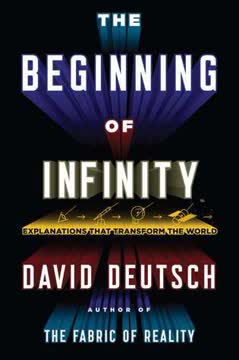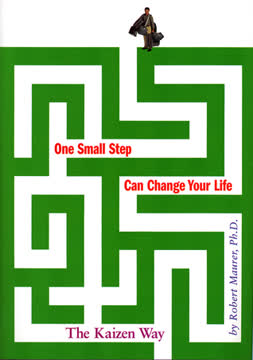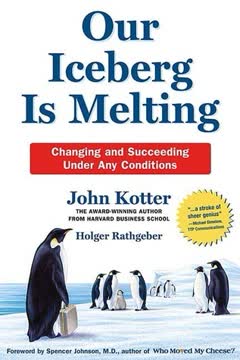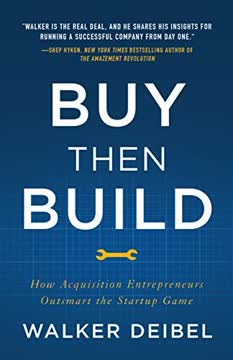نکات کلیدی
1. مدیریت ریسک دچار مشکل است و نیاز به اصلاح دارد
بزرگترین ریسکها معمولاً آن چیزهایی هستند که نادرتر اما بالقوه فاجعهبار هستند—شاید حتی رویدادهایی که هنوز در این سازمان رخ ندادهاند.
وضعیت فعلی مدیریت ریسک. بسیاری از سازمانها به روشهای ناکارآمد برای ارزیابی و مدیریت ریسکها متکی هستند. این روشها اغلب در شناسایی یا ارزیابی صحیح تهدیدات مهم ناکام میمانند. روشهای مدیریت ریسک معمولاً بر روی ریسکهای روتین و به راحتی قابل اندازهگیری تمرکز میکنند و رویدادهای نادر اما بالقوه فاجعهبار را نادیده میگیرند.
نیاز به بهبود. مدیریت ریسک مؤثر نیازمند:
- رویکردی جامع که همه ریسکهای بالقوه را در نظر بگیرد
- روشهای کمی برای ارزیابی دقیق احتمالات و تأثیرات
- ارزیابی و بهروزرسانی منظم ارزیابیهای ریسک
- ادغام مدیریت ریسک در فرآیندهای تصمیمگیری کلی
2. روشهای محبوب ارزیابی ریسک اغلب بدتر از بیفایده هستند
ماتریسهای ریسک میتوانند به اشتباه رتبهبندیهای کیفی بالاتری به ریسکهای کمی کوچکتر اختصاص دهند. برای ریسکهایی با فراوانی و شدتهای منفی همبسته، میتوانند "بدتر از بیفایده" باشند و به تصمیمگیریهای بدتر از تصادفی منجر شوند.
مشکلات با روشهای کیفی. بسیاری از سازمانها از ماتریسهای ریسک یا سیستمهای امتیازدهی کیفی دیگر برای ارزیابی ریسکها استفاده میکنند. این روشها چندین نقص بحرانی دارند:
- ابهام در تعاریف دستههای احتمال و تأثیر
- ناتوانی در مقایسه یا اولویتبندی دقیق ریسکها
- تمایل به سادهسازی بیش از حد سناریوهای پیچیده ریسک
- ناتوانی در در نظر گرفتن همبستگی بین ریسکها
عواقب روشهای ضعیف. استفاده از تکنیکهای ارزیابی ریسک معیوب میتواند منجر به:
- تخصیص نادرست منابع برای کاهش ریسک
- احساس امنیت کاذب درباره ریسکهای بزرگ
- نادیده گرفتن رویدادهای بالقوه فاجعهبار
- تصمیمگیری ضعیف بر اساس اطلاعات نادرست ریسک
3. روشهای کمی برای مدیریت مؤثر ریسک ضروری هستند
مهمترین سوالات زندگی، در بیشتر موارد، واقعاً فقط مسائل احتمالی هستند.
مزایای رویکردهای کمی. روشهای ارزیابی ریسک کمی چندین مزیت ارائه میدهند:
- اندازهگیری دقیق احتمالات و تأثیرات بالقوه
- توانایی مقایسه و اولویتبندی ریسکهای متنوع
- ادغام دادههای تاریخی و قضاوت کارشناسان
- پشتیبانی از تصمیمگیری مبتنی بر داده
ابزارهای کلیدی کمی:
- توزیعهای احتمالی برای مدلسازی عدم قطعیت
- شبیهسازیهای مونت کارلو برای سناریوهای پیچیده
- روشهای بیزی برای بهروزرسانی احتمالات با اطلاعات جدید
- ارزش در معرض خطر (VaR) و سایر معیارهای ریسک مالی
4. قضاوتهای کارشناسی نیاز به کالیبراسیون و ارزیابی مداوم دارند
گفته میشود که کارشناسان واقعی میدانند که چه زمانی نمیدانند. با این حال، غیرکارشناسان (چه فکر کنند که هستند یا نه) قطعاً نمیدانند که چه زمانی نمیدانند.
چالشها با قضاوت کارشناسی. تکیه بر نظرات کارشناسان برای ارزیابی ریسک میتواند به دلیل:
- اعتماد به نفس بیش از حد در تخمینها
- ناسازگاری در قضاوتها
- تعصبات شناختی که بر درک ریسک تأثیر میگذارد
- دشواری در ترکیب نظرات از چندین کارشناس
بهبود ورودی کارشناسان:
- آموزش کالیبراسیون برای بهبود ارزیابیهای احتمالی
- تکنیکهای استخراج ساختاریافته برای کاهش تعصب
- تجمیع وزنی عملکردی از نظرات چندین کارشناس
- بازخورد و ارزیابی منظم قضاوتهای کارشناسی در مقابل نتایج واقعی
5. روشهای بیزی و آزمونهای تجربی مدلهای ریسک را بهبود میبخشند
قضیه بیز یک ابزار ریاضی ساده اما قدرتمند است و باید یک ابزار اساسی برای تحلیلگران ریسک برای ارزیابی چنین موقعیتهایی باشد.
قدرت تحلیل بیزی. روشهای بیزی یک چارچوب قوی برای بهروزرسانی ارزیابیهای ریسک به محض در دسترس قرار گرفتن اطلاعات جدید ارائه میدهند. مزایای کلیدی شامل:
- ادغام دانش قبلی و دادههای جدید
- توانایی در مدیریت اندازه نمونههای کوچک و رویدادهای نادر
- بهبود مستمر تخمینهای ریسک در طول زمان
اهمیت آزمون تجربی. مدلهای ریسک باید به طور منظم در برابر نتایج دنیای واقعی اعتبارسنجی شوند:
- آزمونهای بازگشتی مدلها در برابر دادههای تاریخی
- پیگیری پیشبینیهای مدل و مقایسه با نتایج واقعی
- تنظیم مدلها بر اساس عملکرد مشاهده شده
- استفاده از متاآنالیز برای بهبود کلیه شیوههای ارزیابی ریسک
6. شبیهسازیهای مونت کارلو ابزارهای قدرتمندی برای تحلیل ریسک هستند
مونت کارلو به مراتب قدرتمندترین روش برای محاسبه ارزش در معرض خطر است.
مزایای شبیهسازیهای مونت کارلو:
- توانایی مدلسازی سیستمهای پیچیده با عدم قطعیتهای متعدد
- تولید توزیعهای احتمالی برای نتایج بالقوه
- انعطافپذیری برای ادغام انواع مختلف عوامل ریسک
- پشتیبانی از تحلیل سناریو و آزمون فشار
اجرای روشهای مونت کارلو:
- شناسایی متغیرهای کلیدی ریسک و توزیعهای احتمالی آنها
- تعریف روابط و همبستگی بین متغیرها
- اجرای هزاران شبیهسازی تصادفی برای تولید نتایج
- تحلیل نتایج برای درک پروفایلهای ریسک و تأثیرات بالقوه
7. فرهنگ سازمانی و انگیزهها برای موفقیت مدیریت ریسک حیاتی هستند
بزرگترین بهبودی که در سی سال گذشته دیدهام، بررسی همتایان است. همه چیز از این فیلتر دقیق عبور میکند قبل از اینکه به مدیریت برای تصمیمگیری برود.
ایجاد فرهنگ آگاه به ریسک. مدیریت ریسک مؤثر نیازمند تعهد سازمانی است:
- حمایت رهبری از ارزیابی دقیق ریسک
- ادغام ملاحظات ریسک در تمام فرآیندهای تصمیمگیری
- تشویق به ارتباط باز درباره ریسکهای بالقوه
- پرورش فرهنگ یادگیری و بهبود مستمر
همراستا کردن انگیزهها با مدیریت ریسک خوب:
- پاداش دادن به ارزیابیهای دقیق ریسک به جای پیشبینیهای خوشبینانه
- گنجاندن عملکرد مدیریت ریسک در ارزیابیهای کارکنان
- ارائه منابع و آموزش برای بهبود تحلیل ریسک
- ایجاد مسئولیتپذیری واضح برای تصمیمات و نتایج مرتبط با ریسک
آخرین بهروزرسانی::
FAQ
What's The Failure of Risk Management about?
- Critique of Current Practices: The book critiques traditional risk management methods, particularly qualitative ones, arguing they often lead to poor decision-making.
- Call for Quantitative Methods: Douglas W. Hubbard advocates for a more scientific and quantitative approach to risk management, emphasizing statistical methods like Monte Carlo simulations.
- Structured Analysis: It is divided into three parts: identifying the crisis in risk management, analyzing why current methods are flawed, and offering practical solutions.
Why should I read The Failure of Risk Management?
- Critical Insights: Hubbard provides a thorough examination of the flaws in popular risk management methods, essential for professionals in the field.
- Practical Solutions: The book offers actionable advice and methodologies to improve risk assessment and management practices.
- Broad Applicability: It is relevant for various industries, including finance, engineering, and project management, making it a valuable resource for a wide audience.
What are the key takeaways of The Failure of Risk Management?
- Ineffectiveness of Qualitative Methods: Hubbard argues that qualitative scoring methods, such as risk matrices, often add error and do not improve decision-making.
- Need for Quantitative Analysis: The book advocates for using quantitative methods to better assess risks and make informed decisions.
- Calibration of Expert Judgment: It emphasizes the importance of calibrating expert estimates to improve accuracy in risk assessments.
What are the best quotes from The Failure of Risk Management and what do they mean?
- “First, do no harm.”: This principle should guide risk management practices, ensuring that methods do not introduce additional errors or worsen decision-making.
- “Never attribute to malice that which can be adequately explained by stupidity.”: This highlights the importance of understanding systemic issues rather than blaming individuals for failures.
- “Experience is inevitable. Learning is not.”: This underscores the need for organizations to actively learn from past experiences rather than relying solely on historical knowledge.
What are the “Four Horsemen” of risk management mentioned in The Failure of Risk Management?
- Actuaries: They use scientific and mathematical methods primarily in insurance and pensions, but their influence is limited outside these areas.
- War Quants: Engineers and scientists who apply probabilistic risk analysis and decision analysis, often using simulations to model risks.
- Economists: Financial analysts who focus on statistical analysis of historical data, but may overlook systemic risks and interactions.
- Management Consultants: They often promote qualitative methods that lack empirical support, leading to widespread adoption of ineffective practices.
How does Douglas W. Hubbard define risk in The Failure of Risk Management?
- Long Definition: Risk is described as “a potential loss, disaster, or other undesirable event measured with probabilities assigned to losses of various magnitudes.”
- Short Definition: It is simply “the possibility that something bad could happen.”
- Emphasis on Measurement: Hubbard stresses that risk should be quantifiable, allowing for better decision-making and management.
What is the significance of calibration in risk management according to The Failure of Risk Management?
- Improving Accuracy: Calibration helps experts provide more accurate probability estimates, reducing overconfidence and inconsistency in risk assessments.
- Training Methods: Hubbard discusses techniques for training experts to improve their judgment, which can lead to better decision-making outcomes.
- Empirical Evidence: The book presents research showing that calibrated experts perform significantly better than uncalibrated ones, making calibration a critical component of effective risk management.
What are the problems with popular risk assessment methods discussed in The Failure of Risk Management?
- Qualitative Scoring Issues: Methods like risk matrices often rely on arbitrary scales that compress a wide range of values into limited categories, leading to imprecision.
- Subjective Errors: These methods do not account for known biases and errors in human judgment, which can result in systematic underestimation of risks.
- Lack of Empirical Support: Many popular methods lack scientific validation, making them unreliable for making significant decisions.
How does Douglas W. Hubbard propose to fix the issues in risk management?
- Adopt Quantitative Methods: He advocates for the use of quantitative analysis, such as Monte Carlo simulations, to better assess risks and inform decisions.
- Improve Expert Input: The book suggests methods for calibrating expert judgments and using empirical data to enhance risk assessments.
- Establish Clear Risk Tolerance: Hubbard emphasizes the need for organizations to define their risk tolerance quantitatively, allowing for better resource allocation in risk mitigation.
What is the “one-for-one substitution model” introduced in The Failure of Risk Management?
- Simple Quantitative Model: This model replaces qualitative risk matrices with a straightforward quantitative approach that uses explicit probabilities for likelihood and impact.
- Expert Input: Experts provide subjective estimates of probabilities and potential losses, which are then used in a Monte Carlo simulation to generate a loss exceedance curve.
- Decision Support: The model aims to support decision-making by allowing organizations to visualize risks and compare them against their risk tolerance.
What are the limitations of expert knowledge in risk management according to The Failure of Risk Management?
- Overconfidence: Experts often overestimate their accuracy in predicting outcomes, leading to systematic errors in risk assessments.
- Inconsistency: Experts may provide different estimates for the same risk at different times, indicating a lack of reliability in their judgments.
- Need for Calibration: The book stresses the importance of calibrating expert estimates to improve their accuracy and reduce the impact of biases on decision-making.
How does The Failure of Risk Management address the concept of "calibration"?
- Calibration Importance: Calibration is presented as a critical component of effective risk analysis. Hubbard explains that calibrated estimates lead to more accurate assessments of uncertainty and risk.
- Methods for Calibration: The book outlines various methods for calibrating expert estimates, including the use of equivalent bets and structured reflection on potential errors.
- Impact on Decision-Making: Improved calibration can significantly enhance the quality of risk assessments, leading to better-informed decisions. Hubbard emphasizes that organizations should prioritize calibration training for their experts.
نقد و بررسی
کتاب شکست مدیریت ریسک نقدهای متفاوتی دریافت کرده است، بسیاری از آن به خاطر نقد روشهای سنتی مدیریت ریسک و حمایت از رویکردهای کمی تمجید میکنند. خوانندگان به بینشهای هابرد درباره محدودیتهای ارزیابیهای کیفی ریسک و تأکید او بر روشهای دقیقتر و مبتنی بر دادهها ارزش مینهند. با این حال، برخی کتاب را تکراری و بیش از حد انتقادی نسبت به سایر رویکردها میدانند. منتقدان اشاره میکنند که در حالی که هابرد بهطور مؤثری مشکلات مدیریت ریسک را برجسته میکند، راهحلهای عملی محدودی ارائه میدهد. بهطور کلی، این کتاب برای حرفهایهای حوزه مدیریت ریسک و تصمیمگیری به عنوان اثری اندیشمندانه تلقی میشود.
Similar Books

















